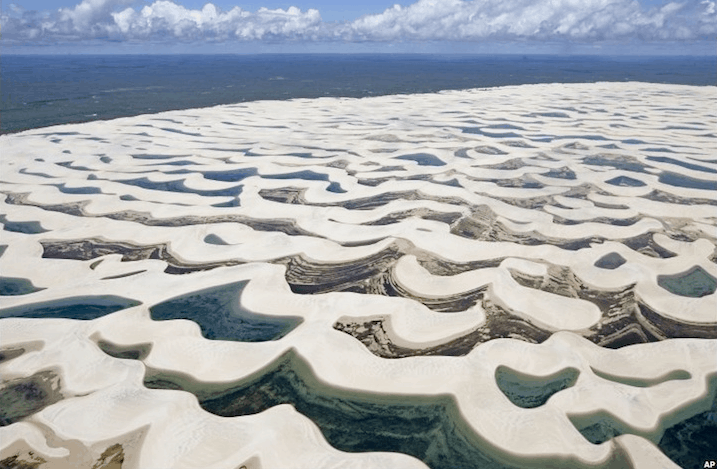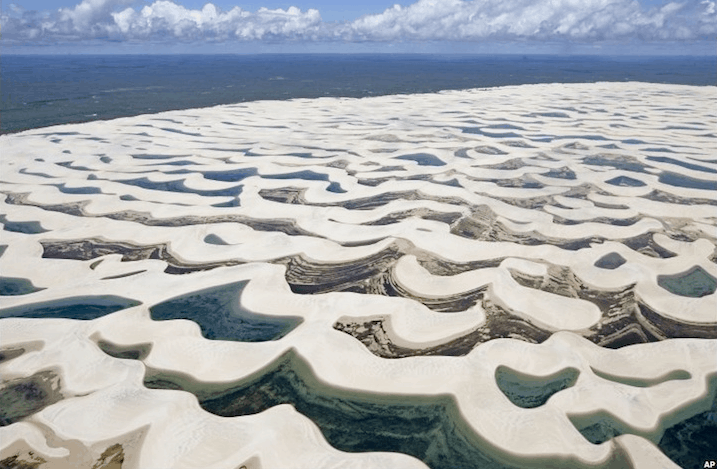One look and it’s on the top of our “must visit” lists!
From January to June, the skies open up and, in the midst of the rolling sand dunes of a national park in north-eastern part of Brazil, a magical transformation takes place. The desert-like landscape transforms into a sea of sand dunes, with crystal clear emerald green lagoons filling the valleys of the golden sand dunes and the result is simply breathtaking. This piece of paradise is specifically located in Lençóis Maranhenses National Park, providing travellers with a beautiful backdrop to escape to, while enjoying a respite from the heat.
Stretching for miles and miles, it looks like a picture-perfect dessert – but it is not categorized as one officially! As it receives about 4 inches of rain each year, it is too rainy to be considered one. Not that it matters that much – it is still gorgeous and this is what makes Lençóis Maranhenses that much more unique.
The best time to visit the lagoons is between July and September, when the pools are most full and the temperatures are not scorching hot. During the peak, in July, some of the lagoons reach over 90 metres long and three metres deep and the waters are a warm 30 degrees C, making them warm enough to swim in.
Although these pools only last for a few months a year, they are still full of life. Interconnected lagoons link up with neighbouring rivers, creating channels for fish to make these pools their summer home.
To get to Lençóis Maranhenses, it’s best to fly into São Luís, the capital of Maranhão. From there, you can book a tour or take public transportation to the town of Barreirinhas which is located just outside the national park. You will be taken to the park via Jeeps, which can handle the terrain. Do note that you have to go in with a guide. If the water levels in the pools are high enough, you will be allowed to swim in them as well.
This experience is an ephemeral one, though. Once the dry season comes along, the equatorial Sun heats the region quickly, leaving no trace of the lagoons at all – just like magic.


















